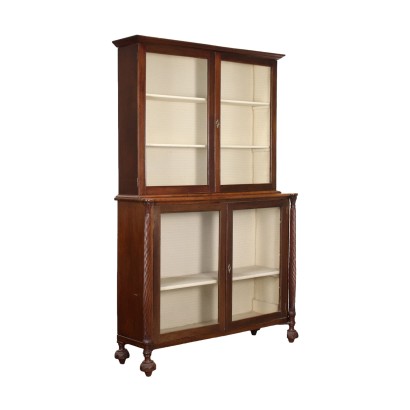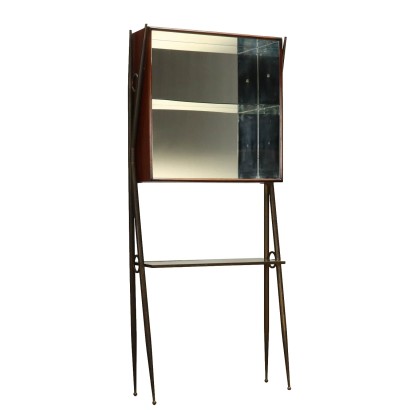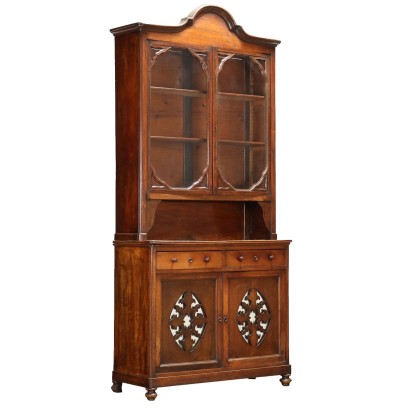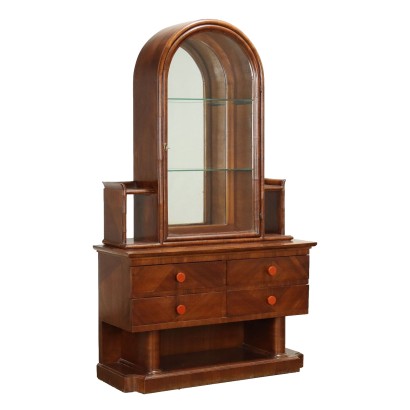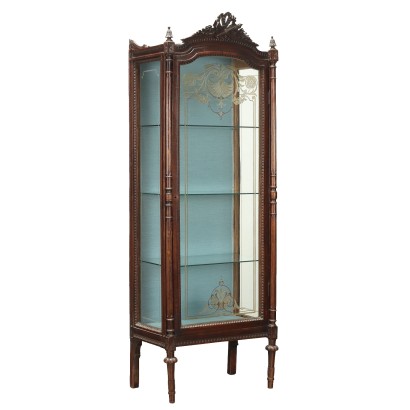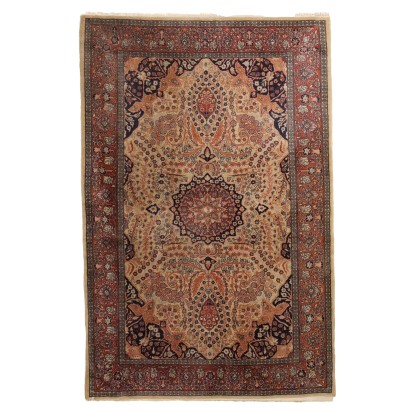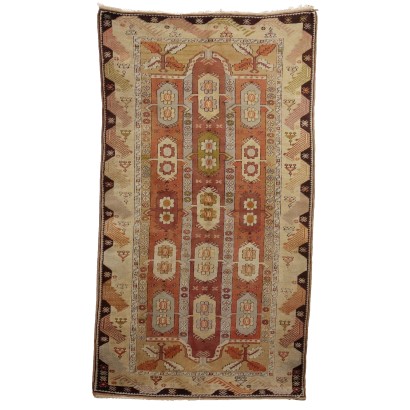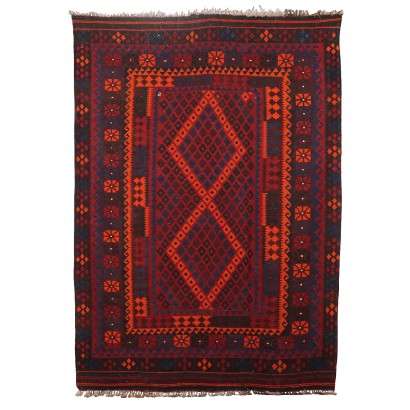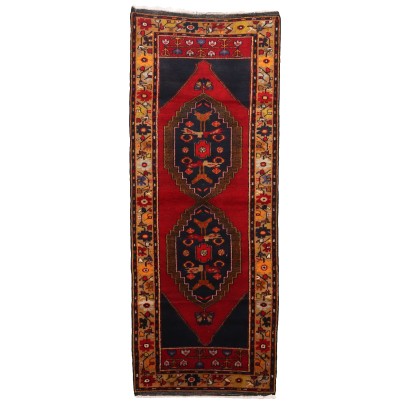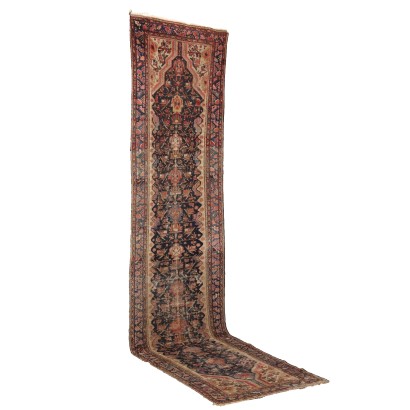Restoration Showcase Mahogany - Italy XIX Century
Features
Style: Bourbon Restoration (1815-1830)
Age: 19th Century / 1801 - 1900
Origin: Liguria, Italy
Main essence: Mahogany
Description
Ligurian restoration showcase, supported by turned and carved feet, on the front, in the lower part it has two doors with glass framed between uprights with twisted columns; raised with two doors, also with glass, which lacks the original wooden grate. Mahogany.
Product Condition:
Product that due to age and wear requires restoration and resumption of polishing.
Dimensions (cm):
Height: 204,5
Width: 135
Depth: 42
Additional Information
Style: Bourbon Restoration (1815-1830)
Starting from the Congress of Vienna in 1815, the arts also expressed the return to the monarchical order and the desire for order after the war years.The stylistic features are an evolution of the Empire style, but with simpler lines and stripped of the typical symbols of the Napoleonic period.
There is greater attention to the practicality of furniture and domestic use.
Find out more with the insights of our blog and FineArt on the Restoration style:
The return to the past in the Restoration period < / A>
Gueridon Restaurazione
Age: 19th Century / 1801 - 1900
19th Century / 1801 - 1900Main essence: Mahogany
It is one of the most precious and sought-after woods in cabinet making. It was discovered in Central America around 1600 and began to be imported to England in the 1700s. Much appreciated for its hardness and indestructibility, it became widespread following the blocking of walnut exports from France in 1720 and the consequent elimination of English import duties on mahogany from the colonies in America and India. The most valuable version comes from Cuba, but it became very expensive. At the end of the 18th century it began to be used also in France in Louis XVI, Directory and Empire furniture, its diffusion declined starting from when Napoleon, in 1810, forbade its import. It was generally used in the manufacture of elegant furniture, due to its characteristics and beautiful grain.Other customers have searched:
Vetrine, vetrina, teca, vetrinetta, scansia, mobile, scaffale, libreria..
Approfondimenti
Consulta anche le migliori librerie e vetrine su FineArt:
Libreria 'Life' Roberto Monsani per Acerbis
Libreria, Giuseppe Speluzzi, Milano, ultimo quarto XIX secolo
Libreria anni '50 manifattura italiana
Libreria anni '60
Sideboard '503' Gianfranco Frattini per Bernini
Mobile Mario Vender anni '60
Trumeau Queen Anne, Inghilterra, 1705 ca.
Sull'antiquariato in generale dai un'occhiata anche a
Classic Monday: da un pezzo dei nostri magazzini alla storia dell'antiquariato
L'antiquariato dalla A alla Z: il Dizionario dell'Antiquariato
Il dizionario dell'antiquariato - Lastronatura
Il dizionario dell'antiquariato - Mascherone
Il dizionario dell'antiquariato - Natura morta
Il dizionario dell'antiquariato - Opificio
Il dizionario dell'antiquariato - Pastiglia
Il dizionario dell'antiquariato - Savonarola
Il dizionario dell'antiquariato - Rosone
Approfondimenti
Consulta anche le migliori librerie e vetrine su FineArt:Libreria 'Life' Roberto Monsani per Acerbis
Libreria, Giuseppe Speluzzi, Milano, ultimo quarto XIX secolo
Libreria anni '50 manifattura italiana
Libreria anni '60
Sideboard '503' Gianfranco Frattini per Bernini
Mobile Mario Vender anni '60
Trumeau Queen Anne, Inghilterra, 1705 ca.
Sull'antiquariato in generale dai un'occhiata anche a
Classic Monday: da un pezzo dei nostri magazzini alla storia dell'antiquariato
L'antiquariato dalla A alla Z: il Dizionario dell'Antiquariato
Il dizionario dell'antiquariato - Lastronatura
Il dizionario dell'antiquariato - Mascherone
Il dizionario dell'antiquariato - Natura morta
Il dizionario dell'antiquariato - Opificio
Il dizionario dell'antiquariato - Pastiglia
Il dizionario dell'antiquariato - Savonarola
Il dizionario dell'antiquariato - Rosone
Alternative proposals
It could also interest you



